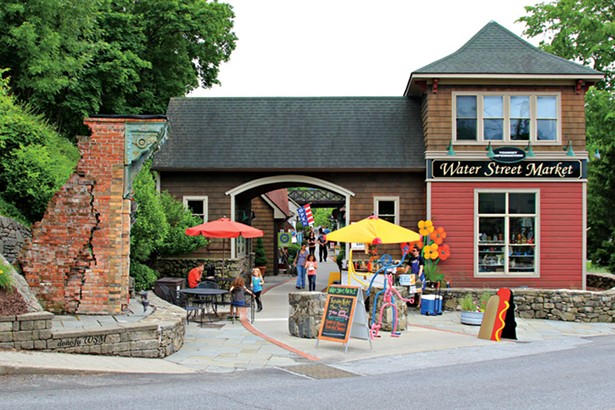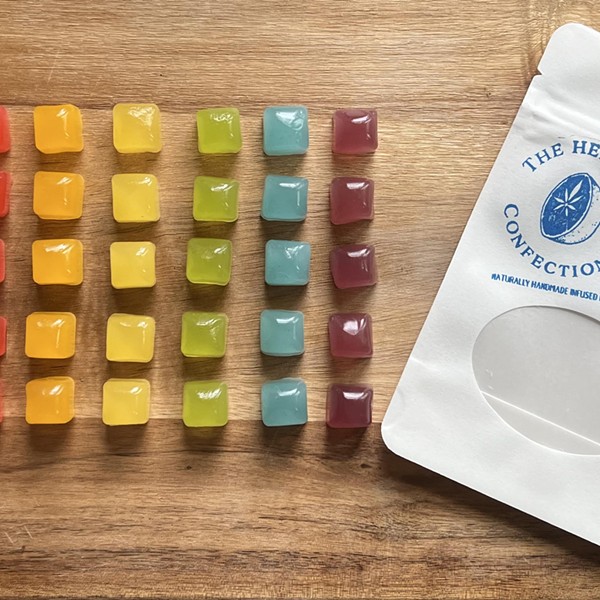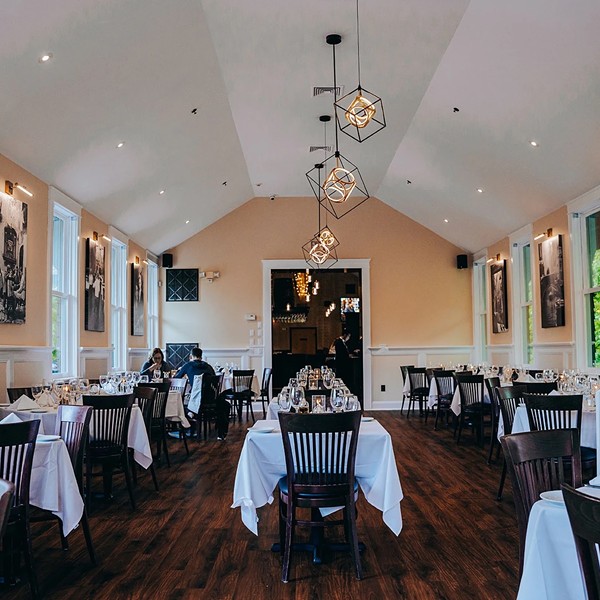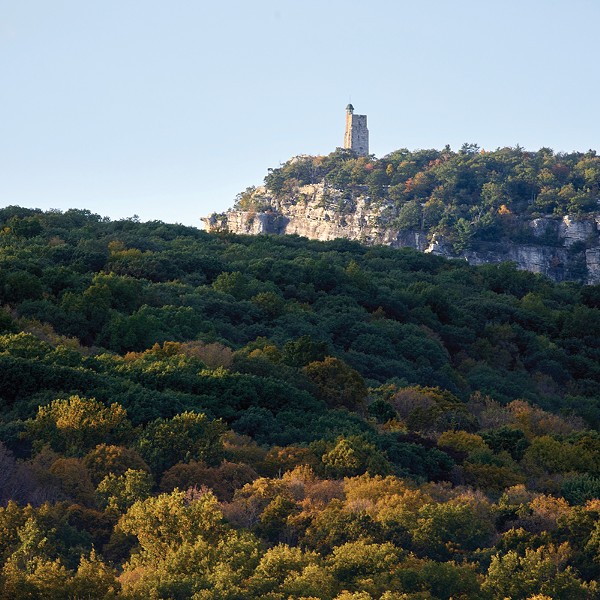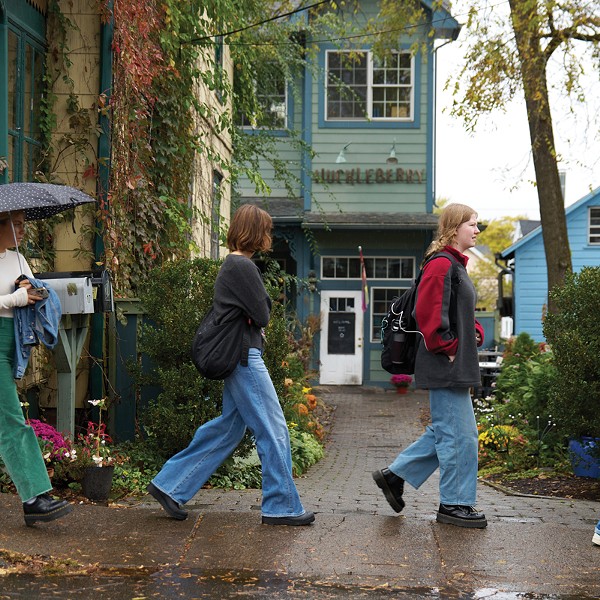Even as Amazon snatches more and more of the market share, physical storefronts are hanging on. Here's a look at Hudson Valley marketplaces and the key walkable retail success.
For nearly a decade now, chain retailers and indoor shopping malls have been struggling to hang on to market share. More and more people are shopping online—e-commerce grew 16 percent in 2017 and represented 13 percent of total retail sales: $453 billion—and Amazon and Walmart are racing each other to offer smoother delivery, better service, wider selection, and lower prices. In the town of Ulster, the Hudson Valley Mall has seen anchors drop like flies: J. C. Penney, Macy's, and Sears have all closed their doors since 2015, leading to an exodus of smaller stores and the recently announced departure of the Regal Cinemas. Research from e-commerce software developer BigCommerce indicates that 95 percent of Americans buy online at least once a year, 80 percent at least once a month, 30 percent weekly and 5 percent every day.
The typical shopping mall that baby boomers were offered as a replacement for downtown department stores may ultimately prove to have been but a brief, mostly unmourned blip in the history of retail. In the US, 1,100 malls are still in operation, though half are expected to close in the next five years, despite efforts to merchandise malls as the optimal public commons with tweaks like mall-walking clubs for seniors, elaborate food courts, and promotional events. Over 5,000 brick-and-mortar stores have closed so far this year, and industry estimates indicate that up to 8,600 stores may end up closing in 2018.
One might easily conclude that the phrase "go shopping" is on the verge of losing its verb. But clicking on "buy now," handy as it may be, deprives a shopper of the multisensory and social experience that's been woven into the human fabric ever since trading began. Market-specific zoning existed as far back as 3,000 BCE. In the centuries since, the agora, the bazaar, the souk, the mercado, and Main Street have been central to urban existence, offering not just an exchange of goods and services but camaraderie, gossip, and human contact. That need hasn't gone away. And in walkable downtowns like Rhinebeck, New Paltz, and Woodstock, independent retailers with creative specialties are making it work. The type of retail that isn't getting slain by free shipping is the authentic part.
Bigger Is Not Better
It starts with the built environment. "Architecture is an interesting art because it touches every aspect of our lives," says Harry Lipstein, owner of the Water Street Market in New Paltz, one of the Hudson Valley's enduringly popular shopping destinations. "It both transcends and converges art with practicality, psychology, philosophy and urban planning. Since the Industrial Revolution, there's been a misguided perception that bigger is better. My vision was, why not allow the buildings to have such a tension, to be so close, that they force eye contact, maybe even force people to rub shoulders? We have this desire to be social beings but for the last several decades we've gotten sprawl, acres of blacktop, and people behind the checkout counter who don't really care." Not one of Lipstein's 20 tenants is a chain; most have been there over 15 years, and while the Royal Cinemas may be pulling out of the mall, Lipstein's adding a 60-seat professional black box theater. Denizen Theatre will stage its first performances this fall."It's about the shopping experience and building relationships," says Rhinebeck Chamber of Commerce executive director Claudia Cooley, of shopping what she likes to refer to as "first-floor Rhinebeck," the village's retail core. "The buzzword for 2018 is 'frictionless.' In an era when you can ask Alexsa to show you, say, a brown Coach purse, and have it ordered and on its way to you in minutes, brick-and-mortar retailers do need to step up their game. But in other ways, online retail is still struggling to catch up. They're developing face recognition to look up your preferences, personable chatbots. Mom-and-pop retailers have had that covered forever."
For an authentic marketplace to thrive, it really helps if individual retailers focus on collaboration, striving to be more complementary than competitive. "Most of first-floor Rhinebeck is woman-owned," says Cooley, "and communication happens constantly. Every store is unique. If you somehow got lost in a store in Rhinebeck, if you called me and named three items you saw in front of you, I could tell you exactly which store you were in," says Cooley.
"We're all fighting the same battle against online and mass-produced, after all. The mall is all blacktop and plastic; in a small, curated village environment, you get different textures and scents and fabrics. There's a maker quality. And art adds depth, an element of pure experience; even the financial services offices have local art all over the walls."
Market as Village Square
The desire to actually touch an object before buying it certainly still exists. At Woodbury Common Premium Outlets in Orange County, 240 high-end shops see 13 million visitors a year. International marketing draws in 20,000 tour groups annually; and the staff at the Commons welcome them in 17 languages. And even with that level of traffic seeking out deep discounts on brands like Fendi and Michael Kors, driving sales over a billion a year, the quality of the experience is key: the recently completed $170 million renovation added better food, free Wi-Fi, and "lighting, artwork, fountains, fireplaces, and outdoor seating in shaded areas," according to the Rockland Times. Parking was built up, not out, with trolleys added to make it less onerous, and new construction replaced old, rather than eating up green space."Eco-village design" says Lipstein, "embraces the paradigm of enough density and foot traffic to get your social and physical needs met without having to get in a car, and have all that also be within walking distance of unfettered nature. Sprawl is a big part of how we became a detached, inhumane society where people do bizarre things like school shootings and suicide. In some ways, cars have been the bane of human existence," Lipstein says.
"My passion is turning the Market into the village square. We've been doing free movies for 10 years, giving the popcorn money to Family of New Paltz, free loaner bikes for the rail trail. We replace chess pieces in the morning because we leave them out all night for people who want a game at three a.m. All the building materials are indigenous; you won't find a scrap of vinyl. All of that speaks to our need for each other and nature." Not to mention, you can find some stupendous antiques and jewelry and a great cup of coffee.
Location, of course, is key: Lipstein freely admits that a college town abutting thousands of acres of protected land is an asset he could not have created had it not already existed. Other vital towns have unforced assets of their own: Features like Cold Spring's waterfront or Warwick's floodplain all lend themselves to density and inherently protected open space. Woodstock's village green is lovely and lively and contentious at times, exactly as a village green should be, and all are welcome to join on in.
In a recent study from consultants A. T. Kearney, researchers found that brick-and-mortar locations serve to create value, which a savvy retailer can then capture both instore and online. The future belongs to what the researchers call cross-channel or omni-channel marketers who can convert "clicks to bricks" and vice versa; contact "in real life" (or IRL) remains important to shoppers of all demographics. Vast expanses of blacktop ringing chilly tile and glass, artificial lighting, and plastic vegetation may well be dying off. Retail entrepreneurs who understand the higher principles of the commons and that it's not just about selling stuff? Not so much.







